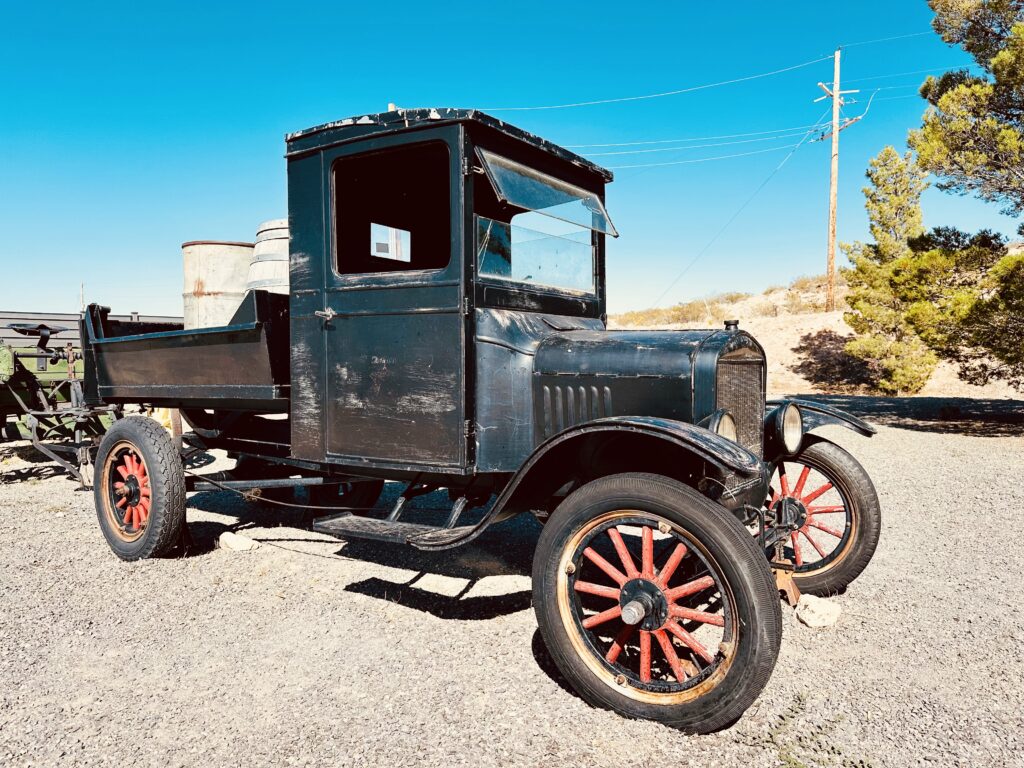
Alexander Medel
There is no sight more gratifying to me than the open road, for the open road allows the body to wander and the mind to wonder. It offers an escape for the imagination and a way of life governed by freedom and fueled by curiosity.
My name is Alexander, and I am a sophomore in Timothy Dwight College studying political science and history. Naturally, my day is complete with writing papers, reading research articles and attending lectures. And as much as I am a Yale student, I consider myself a student of the world with the open road as my classroom.
This travel column, On the Road, recounts several of my adventures on asphalt and all the lessons I have learned from the people, places and things I have encountered on all roads, from those well-traveled to those not taken.
***
A souvenir can be anything. It can be the memory of a comical episode or the tale of a thrilling escapade. It can be a song that has graced your ears or a taste that lingers on your tongue. Souvenirs can be tangible too. Many take photographs. Others opt for shirts or keychains. Regardless of their tangibility or medium, souvenirs accomplish one thing: preserving a moment in time.
After buying a box of donuts at the local Dunkin’ for breakfast, my parents and I left our hotel in Roswell hoping to find something to remember the city by. We found ourselves at Invasion Station, a local gift store. We were the first customers of the day and greeted affably by the shop owner. After a few minutes spent browsing through its offerings, we left the store and the city with a handful of postcards and a new friend — a plush green alien we decided to name in honor of Roswell.
It was 9:30 a.m. by the time we made it to U.S. Route 82. The drive west was flat and undramatic. Unless you find yourself on an interstate or popular highway, many of the roads you would encounter on a road trip offer sparse company if none at all. This was no exception. For much of the drive out of Roswell, we were alone.
By the top of the hour, the landscape changed. The highway, once flat and straight, now bounced as desert plains gave way to mountain roads that skirted through green valleys and wide pastures dotted by farms and cattle. Rocks around us beamed in the sun. Shadows of leaves wove across the road as their trees concealed a boundless blue sky. It was a welcome transformation of scenery with a beauty akin to that of the ginkgo tree in the Timothy Dwight courtyard turning yellow in autumn. We drove further into the Sacramento Mountains and were greeted by the pines of the Lincoln National Forest.
We stopped briefly in the mountain village of Cloudcroft to fill up on gas and continued west, passing through a mountain road that gave us picturesque views of a canyon and a clear sight of the valley below. As the highway descended, the temperature ascended. By the time we got to the base of the mountains and reached Alamogordo, it grew ten degrees warmer. We continued on and saw, from a distance, the dunes of White Sands National Park.
White Sands is one of two national parks in New Mexico, the other being Carlsbad Caverns which we visited the day before. Spending most of its time in the National Park Service as a national monument, its status was elevated to a national park in 2019, making it one of America’s youngest national parks.
Much like our visit to Petrified Forest National Park, we found ourselves on an auto trail. Known as Dunes Drive, it provided us with close access to the park’s rolling dunes. The further we drove into the park, the whiter the dunes became and the more the road disappeared. Sand drifted across the asphalt like a sea spray shooting across a rocky ocean. In the place of waves were dunes as soft and gentle as a string of magnolias dancing to the song of the summer wind. I found myself surrounded by a sea of clear and radiant white. The sands were purer than alabaster and as smooth as New Haven’s first snow.

The national park’s iconic sands owe their texture and color to their mineral composition. Whereas the sand we would find on a California beach or Arizona desert are made of quartz, the sands at White Sands are made of a mineral known as gypsum. As a result, they are impeccably white and soft to the touch compared to the rough and brown sand one may commonly find.
We continued our journey along Dunes Drive and stopped at a parking lot to get a closer look at some dunes. There were a handful of people sitting beneath a tent atop a dune. There was also a family of three scaling a sand dune in hopes of sledding down its slopes. I decided to climb one myself to catch a better glimpse of the sandy expanse. As my feet scrambled and slipped on the sand’s surface, with grains of sand filling my shoes, I felt the heat hit me like a thousand needles. To say it was hot is a gross understatement. The skies were as clear as the sands that rested under them. The temperature soared high at 100 degrees and heat radiated from the white sand. The climb, however messy and warm, was worth it. From the landscape, I saw a brilliant desert that looked as if all the clouds in the sky came to rest on this valley to blanket and comfort a tired and weary world.
We spent a few more minutes on Dunes Drive before leaving White Sands and continuing our drive for the day. We headed west toward Las Cruces and to our lunchtime destination, La Posta de Mesilla.

Located in a historic compound, La Posta de Mesilla is a Mexican restaurant that has catered to locals and travelers alike since its founding in 1939. With multiple dining rooms and a beautiful courtyard, the restaurant offers more than an inviting atmosphere. It also holds the promise of a rich culinary experience as it is considered one of the best Mexican restaurants in the nation. Hoping to see if it lives up to its reputation, and also hungry from the day’s travels, my parents and I entered the restaurant.
For a restaurant of its renown, it displayed great humility. It was unpretentious in design and unboastful in countenance. This is not to say, however, that it was not pretty. It was. It had elegance in its simplicity and a gracefulness displayed by its historic interior. As my parents and I were led to our table, lights painted the adobe walls with a soft serving of yellow and gold. Stained glass allowed the afternoon sun to peek into our dining hall, allowing a kaleidoscope of light to illuminate the room. Servers meandered between the kitchen and dining rooms while patrons enjoyed hearty meals in each other’s company. La Posta had an ambience so warm and welcoming that I thought I was back home.
Growing up in the Bay Area has given me an indelible love for Mexican food. And while my friends separate themselves in the taco and burrito factions, my dish of choice is a plate of enchiladas. After a short wait, our lunch arrived: shrimp ceviche for my father, a fajita special for my mother, and enchiladas for me. The presentation of the dish was simple, and so was the plate it rested on. Steam rose from the enchiladas, turning the salad, rice and frijoles it accompanied into a blending sea of green, orange and brown. Its smell was pleasant and inviting, so much so that it did not resemble a restaurant meal. The dish had the design and aroma of a homemade meal that was cooked and crafted with modesty and care.
I must confess that I am, by no means, a professional food critic. I hold no knowledge of every cuisine known to humanity, nor do I have the vocabulary of a writer for the Michelin Guide. However, if there is one thing that I am, it is that I am picky. My choice of music is particular. My choice of clothing is deliberate. As for my meals, it is easier for a dish to make me full than for a dish to make me smile. On this occasion, the enchiladas made me smile. It was the type of meal where you wanted to eat every bite but would mourn the moment your plate became empty. In the many Mexican restaurants I have dined in, I have eaten a plate of enchiladas to satisfy my hunger. The enchiladas at La Posta satisfied a craving I never knew existed and a longing for a taste I have long searched for and never thought I would find. It ranks now as the best plate of enchiladas I have ever eaten. The experience was, in the words of Yale alum Cole Porter, nothing short of delightful, delicious and de-lovely.
The desserts, too, were absolutely delectable. To complete our experience at La Posta, my parents and I ordered two desserts: fried ice cream and apple empanada. The empanada was fried to a tender brown. It was coated in powdered sugar and served alongside a healthy scoopful of vanilla ice cream. The fried ice cream, on the other hand, was a crisp ball with a rich outer layer and soft inner layer of vanilla ice cream. It rested on a fritter and was coated in a decadent chocolate sauce. A cherry on its crown finished the presentation. Both were absolutely delectable and served to make the heat of the New Mexico summer somewhat more bearable.
When my parents and I set out from home, we had numerous objectives in mind for this road trip, one of them being to find the best Mexican food in the Southwest. After thousands of miles and countless meals in countless cities, we found it at La Posta. In the humble opinion of this writer, a journey across New Mexico, and indeed the entirety of the American Southwest, would be sorely lacking if it did not include a stop at La Posta de Mesilla.
By the time we finished our lunch, it was mid-afternoon. We graciously thanked our servers before leaving the restaurant. We walked around Mesilla for a while before getting on the interstate and completing the last leg of the day’s journey.

We crossed into Arizona before evening, gaining an hour. We arrived in Tucson shortly after, ordered takeout and checked into our hotel. As I looked over our route and itinerary for the next day, I reflected on the events of the past few hours. We had covered roughly 475 miles of road across two states and two time zones. It was a long day. It was a fun day. It was a good day. After spending days on the plains of Texas and mountains of New Mexico, we were back in the warm climes of the Arizona desert. With a stomach well-fed and tired feet resting in the cool linen sheets of my bed, I drifted off to sleep and dreamt of sands and salsa in New Mexico.







